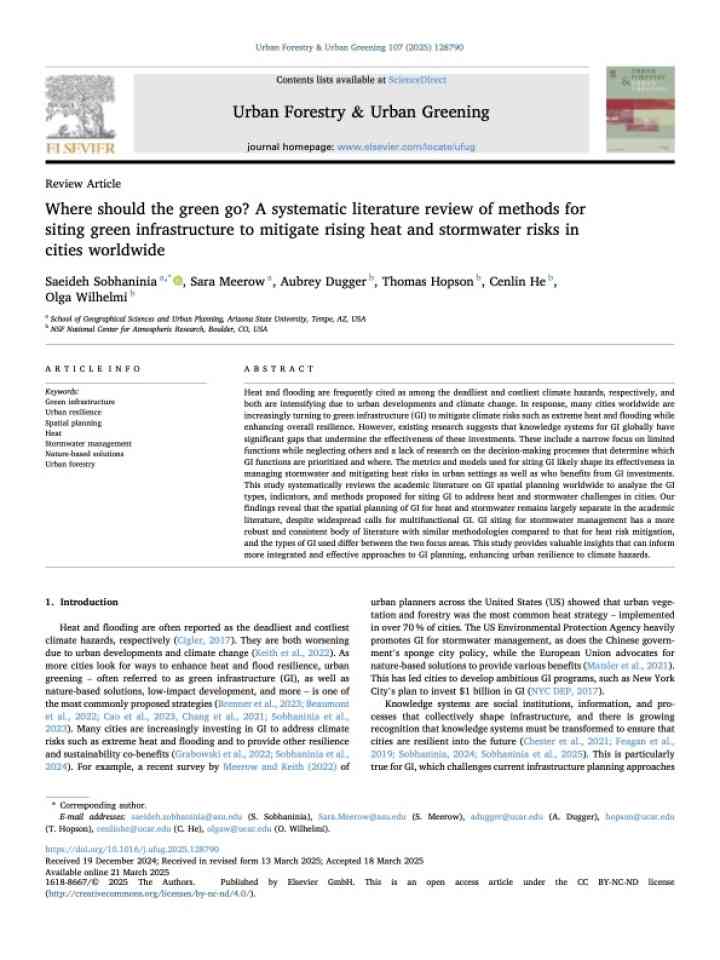Where should the green go? A systematic literature review of methods for siting green infrastructure to mitigate rising heat and stormwater risks in cities worldwide
This study conducts a systematic literature review to explore how green infrastructure (GI) is spatially planned to address two escalating urban climate hazards: extreme heat and stormwater flooding. The research aims to identify the types of GI, siting indicators, and modeling approaches used to determine where GI should be implemented in cities globally. By examining 78 academic studies, the authors investigate the knowledge systems underpinning GI decision-making and assess whether current planning practices support multifunctional and equitable GI deployment. The goal is to better inform urban resilience strategies and planning frameworks as cities grapple with climate change and rapid urbanization.
The review reveals that academic research on GI spatial planning is split between addressing heat and stormwater, with limited integration between the two. Stormwater-focused studies are more prevalent and methodologically consistent, often utilizing tools like SWMM and NSGA-II for hydrological simulation and optimization. In contrast, heat mitigation studies are fewer and use diverse, less standardized methods such as land surface temperature mapping and microclimate modeling. The types of GI recommended also vary—street trees and green roofs for heat, permeable pavement and bioswales for stormwater. Few studies consider both hazards together, highlighting a critical gap in developing multifunctional GI strategies that can deliver broader urban resilience benefits.
Explore further
